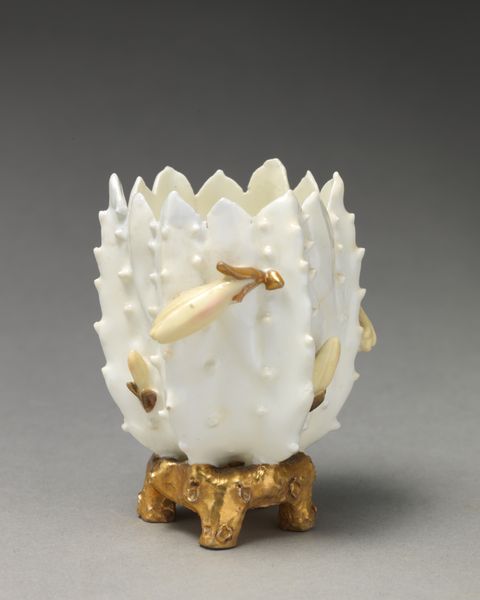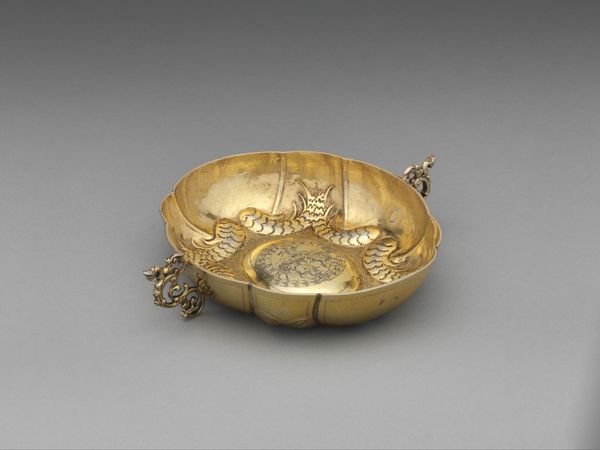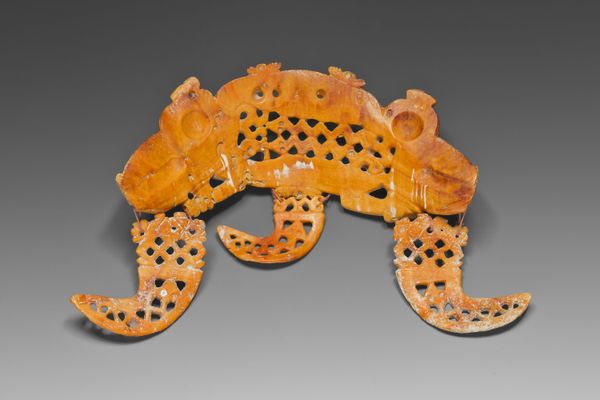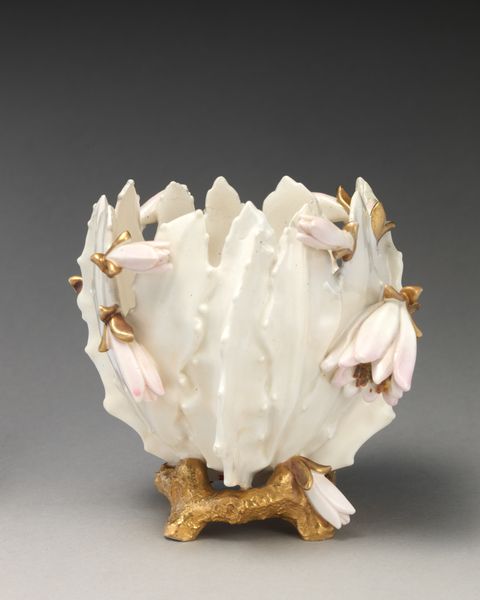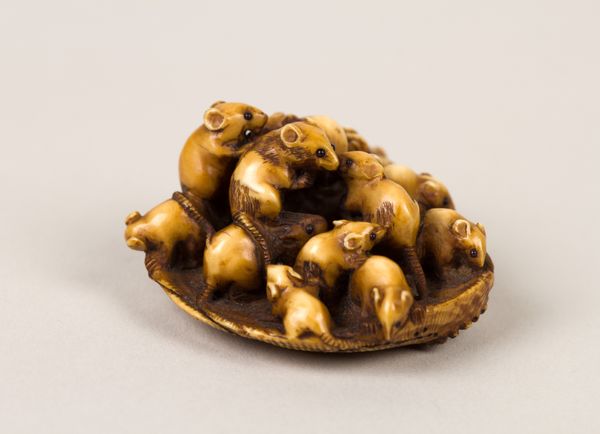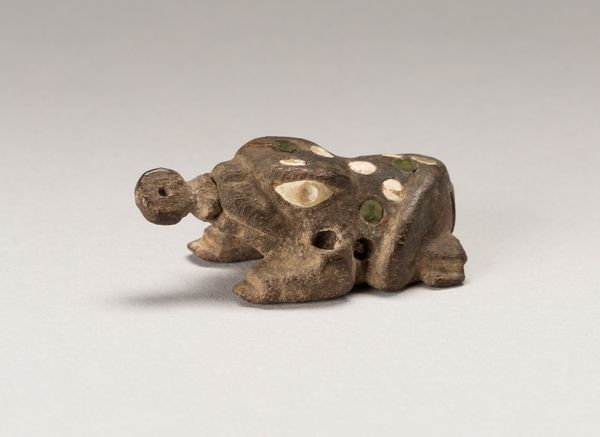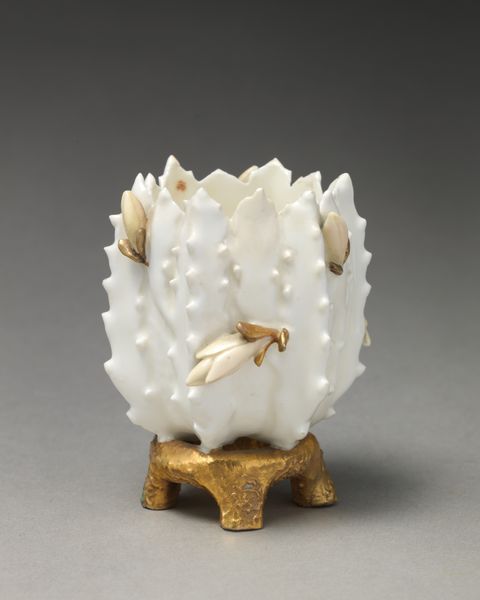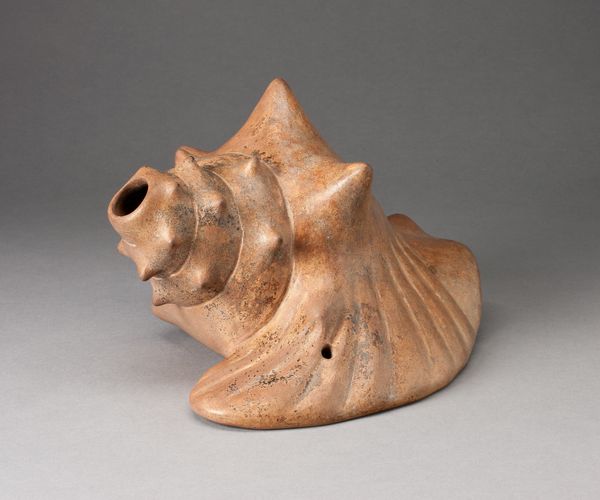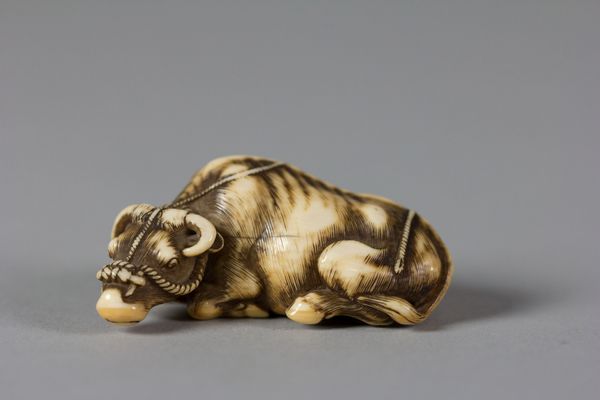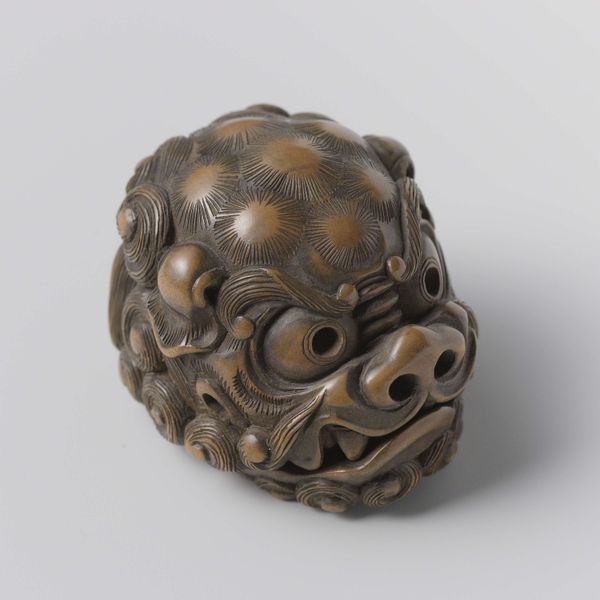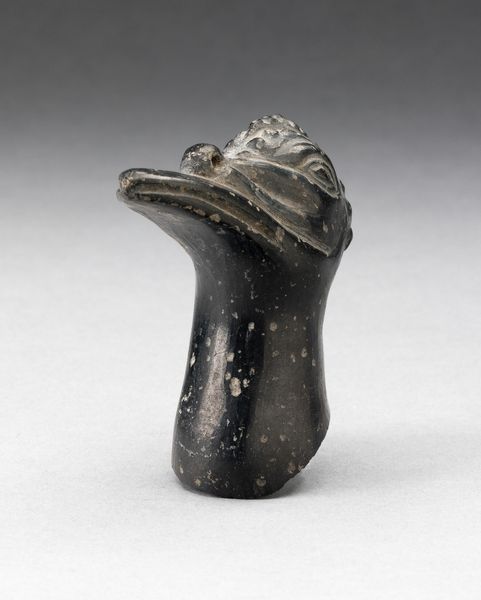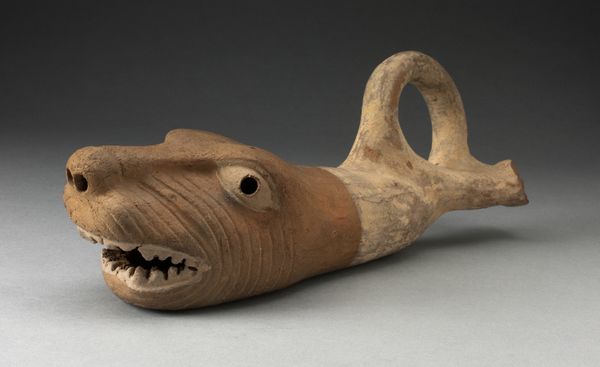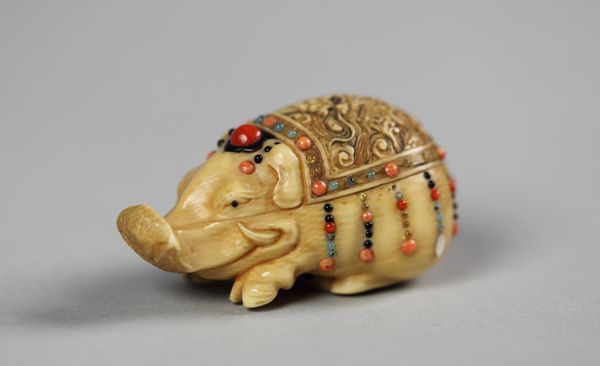
ceramic, earthenware, sculpture
#
animal
#
ceramic
#
figuration
#
earthenware
#
sculpture
Dimensions: 5 3/8 x 10 x 276 in. (13.7 x 25.4 x 701 cm)
Copyright: Public Domain
This earthenware "Crocus Pot" was made by Ira W. Corey sometime in the late 19th century. The Crocus Pot uses a playful design to encourage the growth of plants indoors. It depicts a hedgehog, its back perforated with holes for the crocus flowers to sprout. But why a hedgehog? In the late 19th century, the Arts and Crafts movement gained popularity, rejecting industrial production in favor of handcrafted items that celebrated the beauty of nature. Corey, like many artists of his time, tapped into the Victorian interest in domesticity and the natural world, where owning and cultivating plants became a popular pastime, especially among middle and upper-class women. The hedgehog, a creature often found in English gardens, would have been a familiar and charming sight, making this pot both functional and decorative. Understanding the "Crocus Pot" requires us to investigate the social and cultural contexts in which it was created. Catalogues and journals from the period can help us understand how this piece reflects the values and interests of Victorian society.
Comments
No comments
Be the first to comment and join the conversation on the ultimate creative platform.
